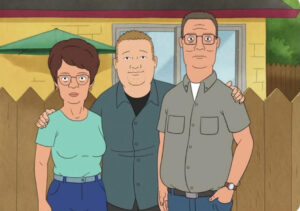When Hergé, the pen name of Belgian cartoonist Georges Remi, introduced Tintin in the Land of the Soviets in 1929, few could have predicted that the boy reporter with his loyal dog Snowy would become one of the most beloved characters in literary and cultural history. Over five decades, Tintin’s adventures captivated readers with tales of intrigue, discovery, and humor, culminating in 24 iconic volumes before Hergé’s death in 1983. The character’s legacy continued to thrive through adaptations, merchandise, and a 2011 Steven Spielberg-directed film, but the core of Tintin’s world—new comic book stories—remained dormant.
Now, for the first time in decades, Tintin is set to return to the comic book medium, reviving the magic of Hergé’s original work. However, this monumental milestone is not without complications. Legal caveats surrounding the character’s intellectual property have shaped the nature of the project and imposed restrictions that may limit its creative scope. This article explores Tintin’s enduring appeal, the significance of this revival, and the legal intricacies that surround one of the world’s most treasured literary creations.
Tintin: A Global Phenomenon
From the moment Tintin burst onto the pages of Le Petit Vingtième, he became a cultural icon. Hergé’s meticulous artwork, gripping narratives, and memorable supporting characters—Captain Haddock, Professor Calculus, and the Thompson twins, to name a few—made Tintin a household name. His adventures took readers to exotic locales, from the depths of South America in The Broken Ear to the deserts of the Middle East in The Crab with the Golden Claws.
Hergé’s commitment to accuracy and research set Tintin apart from other comics of the time. His stories often incorporated real-world events, technologies, and political climates, making them both entertaining and intellectually engaging. This realism, combined with Hergé’s signature “ligne claire” (clear line) art style, ensured Tintin’s universal appeal. By the time of Hergé’s death, the series had sold millions of copies in dozens of languages, cementing its place in global literary history.
The Absence of New Stories
Hergé’s death in 1983 marked the end of an era for Tintin. The artist had made it clear that he did not wish for his characters to be continued by other creators after his passing. This decision, reinforced by his widow and the custodians of the Hergé estate, meant that Tintin’s adventures were effectively frozen in time. Fans continued to enjoy the original 24 volumes, but no new stories were published.
Despite Hergé’s wishes, there have been whispers of revivals over the years. Adaptations like Spielberg’s The Adventures of Tintin: The Secret of the Unicorn (2011) kept the character alive in pop culture, and new generations discovered Tintin through reprints and animated series. However, the absence of new comic book stories left a void that no adaptation could entirely fill.
The Legal Caveats of Tintin’s Revival
The announcement of new Tintin comic book stories has been met with excitement, but it comes with significant legal and creative constraints. The Hergé Foundation (also known as Moulinsart), which oversees the Tintin estate, has carefully guarded the intellectual property, ensuring that any new project aligns with the creator’s legacy.
Copyright Laws and the Public Domain
Under European copyright law, Tintin is protected until 2053—70 years after Hergé’s death. This means that the Hergé Foundation retains exclusive rights to the character and his stories. No unauthorized works can be published without the foundation’s approval, giving them full control over the character’s use.
This protection has allowed Moulinsart to prevent unauthorized adaptations and maintain the integrity of Hergé’s vision. However, it has also limited the ability of other creators to bring fresh perspectives to Tintin’s world.
Maintaining Hergé’s Style
One of the key stipulations for any new Tintin story is that it must adhere to Hergé’s signature style, both in terms of art and storytelling. The “ligne claire” style, characterized by clean lines and minimal shading, is iconic to Tintin and must be preserved to maintain continuity with the original works.
Additionally, the new stories are expected to align with the tone and themes of Hergé’s work, avoiding anachronisms or drastic reinterpretations that could alienate long-time fans.
Limited Creative Freedom
While the return of Tintin is undoubtedly exciting, the legal constraints imposed by Moulinsart may limit the scope of the new stories. Creators working on the project must navigate a delicate balance between honoring Hergé’s legacy and bringing something fresh to the table.
What We Know About the New Stories
The specifics of the new Tintin stories remain shrouded in mystery, but early reports suggest that the project will take inspiration from Hergé’s unfinished sketches and notes. This approach allows the creators to build on the foundation laid by the original artist while introducing new adventures.
Unfinished Stories
One possibility is the completion of Hergé’s final, incomplete work, Tintin and Alph-Art. This story, which explores the world of modern art, was left unfinished at the time of his death. While fans have speculated about how the narrative might have unfolded, completing the work could offer a way to honor Hergé’s intentions while providing closure to his final project.
New Adventures in Familiar Style
Another potential direction is the creation of entirely new stories that stay true to the original formula. These could involve Tintin and his friends embarking on fresh adventures while preserving the timeless qualities that made the series so beloved.
The Challenges of Reviving a Legend
Reviving Tintin in comic book form is no small task. The character’s global fanbase holds high expectations, and any misstep could jeopardize the legacy that Hergé painstakingly built. Several challenges lie ahead:
Meeting Fan Expectations
Fans of Tintin are fiercely protective of the character, and any deviation from Hergé’s vision could spark backlash. The creators must strike a careful balance between nostalgia and innovation, ensuring that the new stories feel authentic while offering something new.
Preserving Cultural Sensitivity
Some of Tintin’s earlier works, such as Tintin in the Congo, have faced criticism for their outdated depictions of race and culture. The new stories must navigate these issues carefully, reflecting modern sensibilities while respecting the historical context of the original works.
Creative Constraints
The legal and stylistic constraints imposed by the Hergé Foundation may limit the creators’ ability to experiment. While these restrictions ensure fidelity to the original works, they could also stifle the creative freedom needed to make Tintin relevant to a contemporary audience.
Tintin’s Legacy in the 21st Century
The return of Tintin represents an opportunity to reintroduce the character to a new generation. In an era of technological innovation and global connectivity, Tintin’s adventures have the potential to resonate with audiences in fresh and exciting ways.
A Timeless Hero
Tintin’s appeal lies in his timeless qualities—his curiosity, courage, and unwavering sense of justice. These traits make him a relatable and inspiring figure for readers of all ages, ensuring his continued relevance in the modern world.
Expanding the Universe
The new stories could expand Tintin’s universe by introducing new characters, locations, and themes. Whether exploring environmental issues, technological advancements, or contemporary geopolitics, the possibilities are endless.
Multimedia Opportunities
Beyond comic books, Tintin’s revival opens the door to new adaptations in film, television, and digital media. With advances in animation and virtual reality, the character’s adventures could be reimagined for a variety of platforms, bringing his world to life like never before.
Impression
The return of Tintin to the comic book medium is a momentous occasion for fans and a testament to the enduring appeal of Hergé’s creation. While legal and creative challenges abound, the opportunity to revisit the world of Tintin offers a chance to honor the past while looking to the future.
As the project unfolds, one thing is certain: Tintin’s legacy as a symbol of adventure, curiosity, and resilience will continue to inspire generations to come. Whether through new stories, adaptations, or the original volumes that started it all, Tintin remains a timeless hero in a rapidly changing world.
No comments yet.








